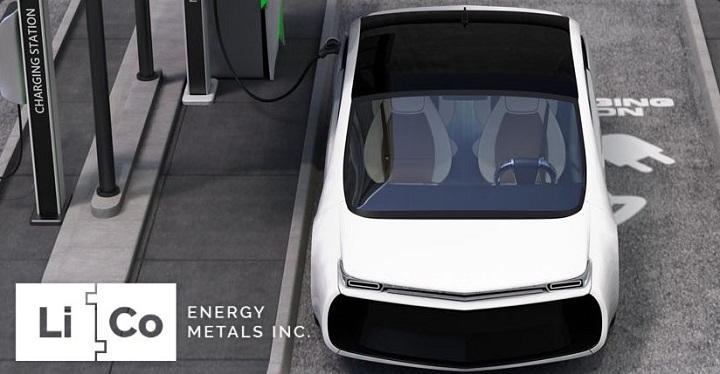According to the International Energy Agency (IEA), the number of electric vehicles on the roads throughout the world rose to 2 million in 2016. This means that there was a doubling from the 2015 poll of electric vehicles on the roads. That said, these vehicles only represent 0.2% of the global count.
As a result, investors are left wondering, how many electric cars will be on the road in five years? Ten years? The answers to these questions will create a domino effect and will decide the futures of a number of metals in the coming years.
Lithium and cobalt, for example, are two materials that are used to create batteries that are already bubbling as supply chains. Additionally, aluminum and copper are predicted to continue benefiting from higher usage across a transport sector. On the other side of the equation, platinum and palladium will be the losers in this situation as electrification can decrease the need for catalytic converters.
Keep in mind however that lithium and cobalt supply and price will depend entirely on the direction that demand heads in. And that, ladies and gentlemen, is the elephant in the room.
The Breakdown
Executives at the Union Bank of Switzerland have tried to answer the above questions and they have done this by breaking down the Chevy Bolt. Why did they chose this car to tear apart? Well, the Bolt was the first mass-market electric car that had a range of over 200 miles. According to UBS’s Global Q-Series “UBS Evidence Lab Electric Car Teardown – Disruption Ahead?”, the Bolt “has a price tag and range similar to the upcoming Tesla Model 3, which is Tesla’s long-awaited entry into the mass market.”
What UBS didn’t expect to find during their breakdown was that the Chevy Bolt’s powertrain was a lot cheaper to produce ($4,600) than they had originally expected “with more cost reduction potential left.”
So what was the takeaway? UBS decided that the Chevy Bolt could reach buyer cost of ownership parity with a similar internal combustion engine car, like the Volkswagen Gulf, a lot sooner than expected.
Essentially this would act as a tipping point for demand. Meanwhile, the UBS has increased its electric vehicle (EV) sales projections by roughly 50%. “We now forecast 3.1m EVS sold in 2021 (battery-electric cars and plug-in hybrids) and 14.2 sold in 2025, instead of 2.5m and 9.7m previously.”
Mentioned above, electric vehicles only represent 0.2% of the global count, but EV’s share of new sales is thought to rise from 0.2% to 3% in 2021 and 14% in 2025.
We’re on the verge of two technical revolutions
Founded by Tony Seba of Stanford University, RethinkX believes that we are on the verge of two technical revolutions in the automotive industry.
The think tank argues that the electrification of the global car movement will correspond with the rise of autonomous vehicle technology. As a result, these trends will develop a symbiotic relationship. RethinkX stated the following:
“By 2030, within 10 years of regulatory approval of autonomous vehicles (AVs), 95% of U.S. passenger miles traveled will be served by on-demand autonomous electric vehicles owned by fleets, not individuals, in a new business model we call ‘transport-as-a-service’.”
In truth, no one knows just how fast electrification or automation of the global vehicle fleet will occur. There are far too parts to this equation, regardless of the 24 the UBS discovered in the Chevy Bolt’s powertrain.
In regards to UBS’ research, the bank plans to tackle these issues from a consumer choice model, but in other parts of the world, this choice will be affected by government commandment.
The state of California, for instance, set the path with its 2012 order that automakers that sell more than 600,000 vehicles a year in California will have to sell a designated amount of zero-emission vehicles or they will risk losing the right to sell. Aside from California, other cities have started to take an initiative. London, for instance, has decided that all new black cabs will be partially electric-powered by January of 2018.
All in all, cobalt and lithium are two metals who find themselves right in the middle of the action in the green transport revolution due to their involvement in batteries.
Two key examples of what happens when supply chains don’t react fast enough to new demand drivers are the volatile lithium price hikes in 2016 and the price hikes in cobalt earlier in 2017. That said, the price shock of lithium seems to be decreasing because producers are starting to increase capacity. At the start of January, cobalt skyrocketed from $32,750 per tonne to $56,250 in April. Additionally, cobalt prices suggest that it will be flattening out at $56,500. It seems that, for both lithium and cobalt, the shock price has passed.
That said, it’s important to keep in mind that price volatility could continue as producers, investors, and executives are all struggling to create consensus demand models.
The takeaway here is this: Vehicle electrification is going to take over the market in coming years and lead to massive moves in price, but the question that remains is, are these prices going to be moving up or down?
Featured Image: twitter











